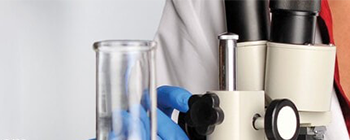Learn More
CD283 (TLR3) Monoclonal Antibody (TLR3.7), eBioscience™, Invitrogen™
Mouse Monoclonal Antibody
Supplier: Invitrogen 14903982
Description
Description: The TLR3.7 monoclonal antibody reacts with human Toll-like receptor 3 (TLR3). To date, at least twelve members of the Toll-like receptor family have been identified. This family of type I transmembrane proteins is characterized by an extracellular domain with leucine-rich repeats and a cytoplasmic domain with homology to the type I IL-1 receptor. In the innate immune response, TLRs recognize molecular patterns associated with microbial pathogens and induce antimicrobial activity. TLR3 recognizes double-stranded (ds)RNA, induces the activation of NF-kappaB through MyD88-dependent and -independent pathways, and the production of type I interferons (IFNs). TLR3.7 suppressed poly(I):poly(C)-mediated IFN-beta production by human fibroblasts naturally expressing TLR3 on their surface. Applications Reported: This TLR3.7 antibody has been reported for use in intracellular staining followed by flow cytometric analysis, immunoprecipitation, immunoblotting (WB), immunohistology staining of frozen tissue sections, and immunohistology staining of paraffin embedded tissue sections. (Fluorochrome conjugated TLR3.7 is recommended for use in intracellular flow cytometry.) It has also been reported in in vitro inhibition of ligand binding. For optimal detection of TLR3 with this mAb by flow cytometry, PE-conjugated or Biotin-conjugated TLR3.7 (revealed with SAv-PE cat. 12-4312) are recommended. Applications Tested: This TLR3.
TLR3 (Toll-like receptor 3, CD283) is a member of the Toll-like receptor (TLR) family which plays a fundamental role in pathogen recognition and activation of innate immunity. TLRs are highly conserved from drosophila to humans and share structural and functional similarities. TLRs recognize pathogen-associated molecular patterns (PAMPs) that are expressed on infectious agents, and mediate the production of cytokines necessary for the development of effective immunity. The various TLRs exhibit different patterns of expression. TLR3 is most abundantly expressed in placenta and pancreas, and is restricted to the dendritic subpopulation of the leukocytes. TLR3 recognizes dsRNA associated with viral infection, and induces the activation of NF-kappaB and the production of type I interferons. Further, TLR3 may play a role in host defense against viruses, and the use of alternative polyadenylation sites to generate different length transcripts has been noted for the TLR3 gene. Like its counterparts in Drosophila, TLRs signal through adaptor molecules and could constitute an important and unrecognized component of innate immunity in humans. The TLR family is a phylogenetically conserved mediator of innate immunity that is essential for microbial recognition. TLRs characterized so far activate the MyD88/interleukin-1 receptor-associated kinase (IRAK) signaling pathway. TLR3 is the only human TLR which does not utilize MyD88 as an adaptor molecule instead utilizing TRIF in a signaling path which results in downstream activation of IRF-3 and NF-kB. TLR3 activation leads not only to Type I interferon induction but also to other inflammatory cytokines which result in DC maturation. TLR3 is known to recognize viral double-stranded (ds) RNA, a molecular pattern associated with viral infection. Recently it has been shown to recognize viruses such as Influenza A and West Nile Virus and can mediate entry of at least West Nile Virus.Specifications
| CD283 (TLR3) | |
| Monoclonal | |
| 0.5 mg/mL | |
| PBS with 0.09% sodium azide; pH 7.2 | |
| O15455 | |
| TLR3 | |
| Affinity chromatography | |
| RUO | |
| 7098 | |
| 4° C | |
| Liquid |
| Flow Cytometry, Immunohistochemistry (Frozen), Immunohistochemistry (Paraffin), Immunoprecipitation, Western Blot | |
| TLR3.7 | |
| Unconjugated | |
| TLR3 | |
| AI957183; CD283; IIAE2; TLR 3; TLR3; TLR-3; toll like receptor 3; toll-like receptor 3; toll-like receptor 3 variant 1 | |
| Mouse | |
| 100 μg | |
| Primary | |
| Human | |
| Antibody | |
| IgG1 κ |
For Research Use Only.



-Flow-20170216130641.jpg-250.jpg)